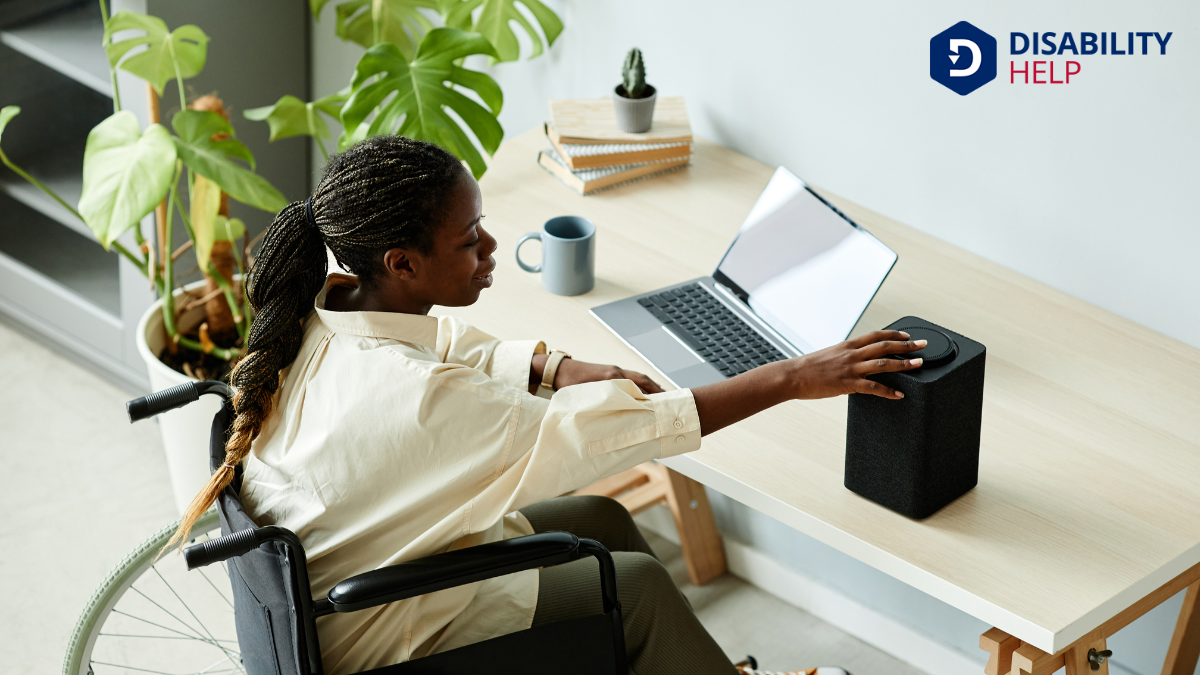Let's explore personal mobility devices together. These compact, motorized vehicles, like e-scooters and hoverboards, are transforming how we move. Designed for individual use, they're perfect for short commutes and offer increased independence. Plus, they're eco-friendly alternatives to cars, helping reduce urban traffic congestion. Curious about the different types and their impact on our daily lives? There's more to uncover about this innovative travel solution.
Key Takeaways
- Personal Mobility Devices are compact, motorized machines for individual transportation like e-scooters, e-bikes, and electric skateboards.
- They are powered by rechargeable batteries, offering an alternative to traditional vehicles for short-distance commutes.
- PMDs include various types, such as powered wheelchairs, scooters, and personal transporters like Segways.
- Safety measures include wearing protective gear and adhering to local laws and regulations.
- PMDs are environmentally friendly, reducing emissions and energy consumption compared to conventional vehicles.
Understanding the Basics of Personal Mobility Devices
When diving into the world of personal mobility devices, it's essential we first grasp what these innovative machines entail. Personal mobility devices are compact, motorized machines designed to transport individuals over short distances. They're powered by rechargeable batteries and offer a convenient solution for traversing urban environments or large campuses.
As we explore these devices, we'll notice they provide freedom and independence to those who might find walking long distances challenging. Their portability allows us to easily store them in our homes or transport them in vehicles.
These devices are often equipped with intuitive controls, making them accessible for users of all ages. By understanding their fundamental purpose and advantages, we can appreciate how they enhance our daily lives and promote mobility for everyone.
Types of Personal Mobility Devices

Now that we've got a grasp on the basics, let's explore the various types of personal mobility devices available today.
First up, we've manual wheelchairs, offering independence to those with mobility challenges. Next, powered wheelchairs provide the same benefits with added motorized assistance for easier movement.
Don’t forget scooters, which can be either manual or powered, and offer a compact, maneuverable option for short distances.
For those seeking versatility, there are personal transporters, like the Segway, which use gyroscopic technology for balance and control.
Skateboards and rollerblades also fall under this category, appealing to those who enjoy a more active form of transport.
Finally, unicycles, both electric and manual, add a unique twist to personal transportation.
With so many options, there's a device for everyone!
The Rise of Electric Scooters and Bicycles
As cities worldwide endeavor to create greener and more efficient transportation systems, electric scooters and bicycles have emerged as popular alternatives to traditional commuting methods. We’re witnessing a shift in how we navigate urban landscapes.
These sleek devices offer not just convenience but also a smaller carbon footprint, aligning with our collective push toward sustainability.
Electric scooters and bicycles empower us to maneuver through congested streets with ease and agility. They’re perfect for those short trips where driving seems excessive, and public transport doesn’t quite fit.
With the added bonus of being fun to ride, these devices have captured the interest of many city dwellers. As we embrace these changes, we’re contributing to a cleaner future while enjoying the freedom of personal mobility.
Hoverboards and Unicycles: A New Way to Travel
Let's explore how hoverboards and unicycles offer an exciting twist in personal mobility.
They’re compact, making them perfect for short commutes, but we must consider safety to guarantee smooth rides.
Advantages of Personal Mobility
While personal mobility devices like hoverboards and unicycles might seem futuristic, they’re quickly becoming a practical and exciting way to travel. They offer us a unique blend of convenience and fun, transforming mundane commutes into adventures.
Imagine bypassing traffic and zipping through the city with ease. These devices are compact and portable, making them perfect for short trips or the last leg of our daily commute. They’re eco-friendly, reducing our carbon footprint as we leave cars behind.
Plus, they promote physical activity, enhancing our balance and coordination. Not only do they save us time, but they also inject a sense of thrill into our routine travels.
With personal mobility devices, we embrace a new era of efficient and enjoyable transportation.
Safety Considerations and Tips
When we venture into the world of personal mobility devices like hoverboards and unicycles, safety becomes a crucial consideration. Ensuring our rides are both fun and secure is essential.
First, we should always wear protective gear, such as helmets and knee pads, to minimize injury risks. Let’s also check that our devices are in top condition before each use, looking out for any signs of wear or damage.
Navigating safely involves understanding our surroundings and being mindful of others. We should practice in safe, open spaces to gain confidence before hitting busy areas.
Here are some key safety tips:
- Wear protective gear like helmets and pads
- Inspect devices regularly for damage
- Practice in open areas to build confidence
- Stay aware of your surroundings to avoid accidents
Environmental Benefits of Personal Mobility Devices

As we explore the advantages of personal mobility devices, their positive impact on the environment stands out prominently.
These devices, often powered by electricity, produce considerably fewer emissions than conventional vehicles. When we choose to ride an e-scooter or an electric bike, we're contributing to cleaner air and reducing our carbon footprint.
By opting for these eco-friendly alternatives, we lessen our reliance on fossil fuels, helping to conserve valuable natural resources.
Personal mobility devices also require less energy to operate, which leads to decreased demand for energy production and a corresponding drop in greenhouse gas emissions.
In our journey towards a more sustainable future, adopting personal mobility devices can play an essential role in creating a healthier planet for generations to come.
Navigating Urban Landscapes With Personal Mobility Devices
As we navigate urban landscapes with our personal mobility devices, we quickly realize the efficiency they bring to our daily commutes.
However, we encounter challenges like device compatibility with existing infrastructure and face safety concerns amidst busy city streets.
Let's explore how we can address these issues to make our urban journeys smoother and safer.
Urban Commute Efficiency
Although urban landscapes can be challenging to navigate, personal mobility devices (PMDs) offer an efficient solution for our daily commutes. They allow us to maneuver through crowded streets, avoid traffic congestion, and reduce our carbon footprint.
With PMDs, we can streamline our urban journeys, making our commutes quicker and more enjoyable. Imagine zipping past gridlocked cars or smoothly gliding to work while others are stuck waiting.
PMDs are revolutionizing how we experience city life by offering:
- Increased speed: Save precious time by cutting down on commute duration.
- Flexibility: Easily switch between roads and sidewalks to find the fastest route.
- Convenience: Portable and easy to park, they fit seamlessly into our busy lives.
- Eco-friendliness: Contribute to a cleaner environment with zero emissions.
Device Compatibility Challenges
Maneuvering urban landscapes with personal mobility devices (PMDs) can be tricky due to device compatibility challenges. As we navigate busy streets, we often encounter issues like limited charging stations or incompatible docking ports. Not every city has infrastructure that supports the variety of PMDs available, making it difficult to guarantee our devices are always ready for use.
Additionally, connectivity issues arise with apps and systems designed to integrate PMDs into public transport networks. These systems don’t always accommodate all devices, leaving us juggling multiple apps or missing out on seamless travel experiences.
It’s essential for cities to adopt universally compatible systems and for manufacturers to take these challenges into account, so we can enjoy a smoother, more efficient journey.
Infrastructure and Safety Concerns
Maneuvering urban landscapes with personal mobility devices not only involves dealing with compatibility issues but also requires a keen focus on infrastructure and safety.
As more of us embrace these devices, ensuring safe and accessible routes becomes vital. We need to take into account several factors to make our journeys smooth and secure.
- Path Quality: Are sidewalks and pathways maintained, wide enough, and free of obstacles?
- Traffic Integration: How do we safely share the road with motor vehicles and bicycles?
- Lighting and Visibility: Are there enough streetlights to enhance visibility, especially at night?
- Safety Measures: Do we've sufficient signage and dedicated lanes to guide and protect us?
Safety Considerations and Regulations for Personal Mobility Devices
As we embrace the convenience of personal mobility devices (PMDs), it’s vital to prioritize safety and understand the regulations that govern their use.
First, we must equip ourselves with helmets and protective gear to minimize injury risks. It’s important to confirm our PMDs are well-maintained; regularly check brakes, tires, and lights.
We should also be aware of local laws that dictate where and when these devices can be used. Some areas have speed limits, while others restrict PMD usage on sidewalks or roads. Understanding these rules helps us avoid fines and accidents.
Additionally, let's stay attentive to our surroundings, avoiding distractions like headphones.
Conclusion
To sum up, we've explored the diverse world of personal mobility devices and their growing impact on urban travel. From e-scooters to hoverboards, these devices offer us a flexible, eco-friendly way to navigate city streets. They help reduce congestion and promote sustainable transportation options. As we embrace these innovative solutions, let's stay informed about safety regulations and continue to adaptA grassroots disability rights organization in the U.S. that focuses on promoting community-based se... to the changing landscape of personal mobility, ensuring a smoother, greener ride for everyone.






